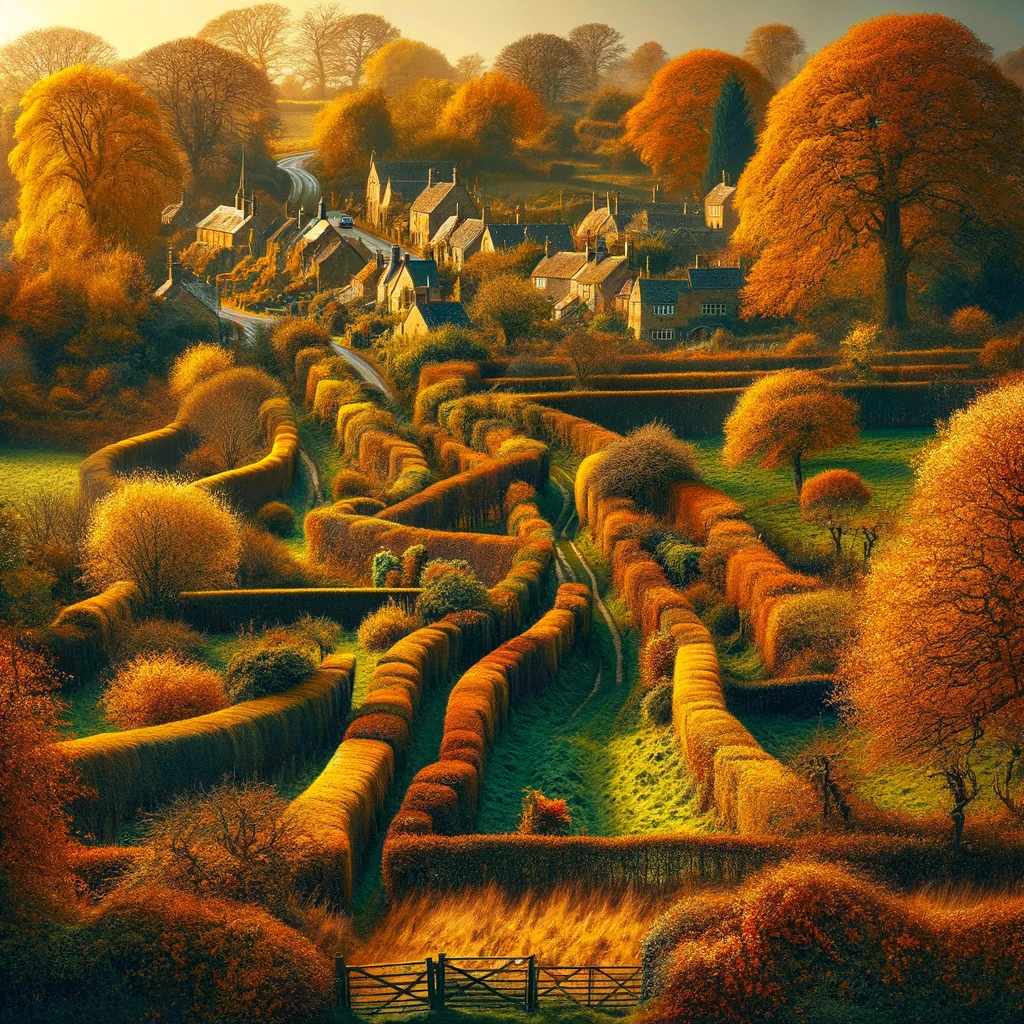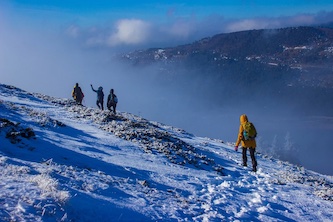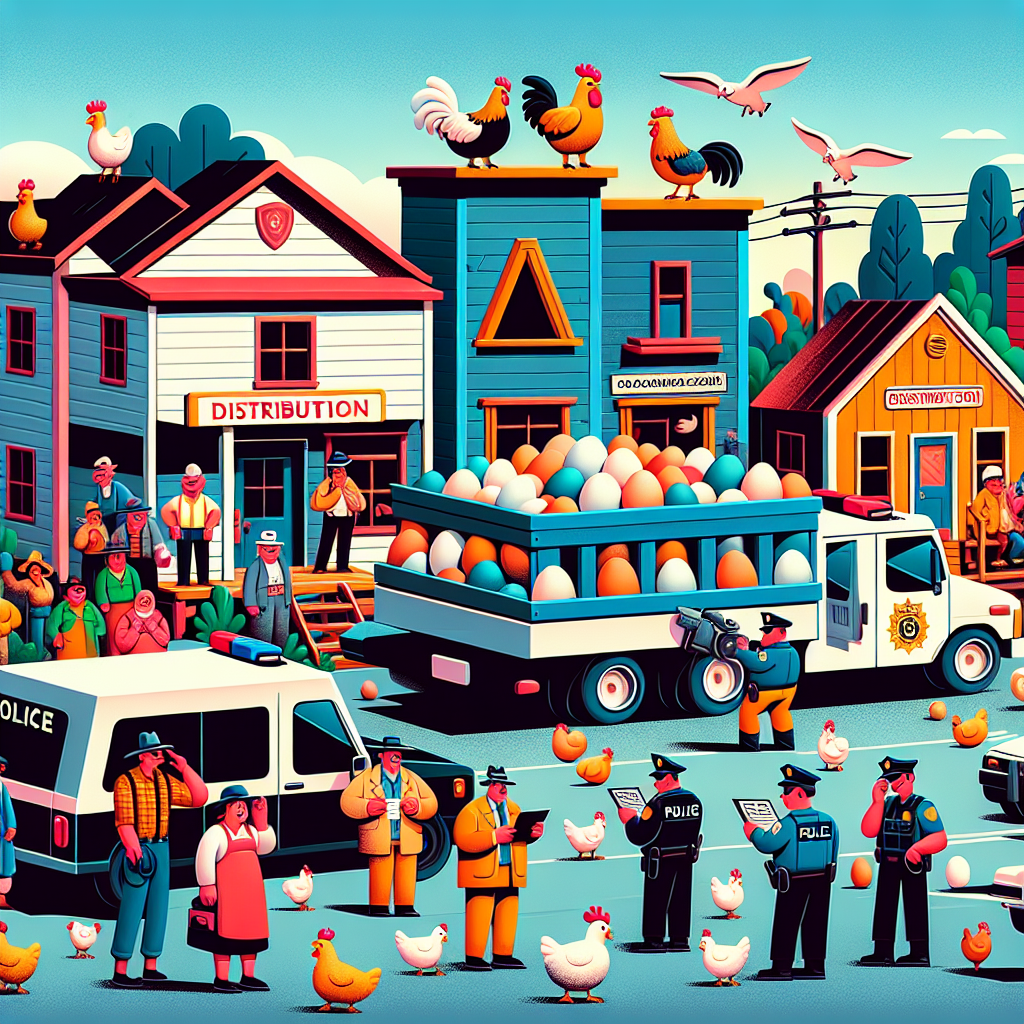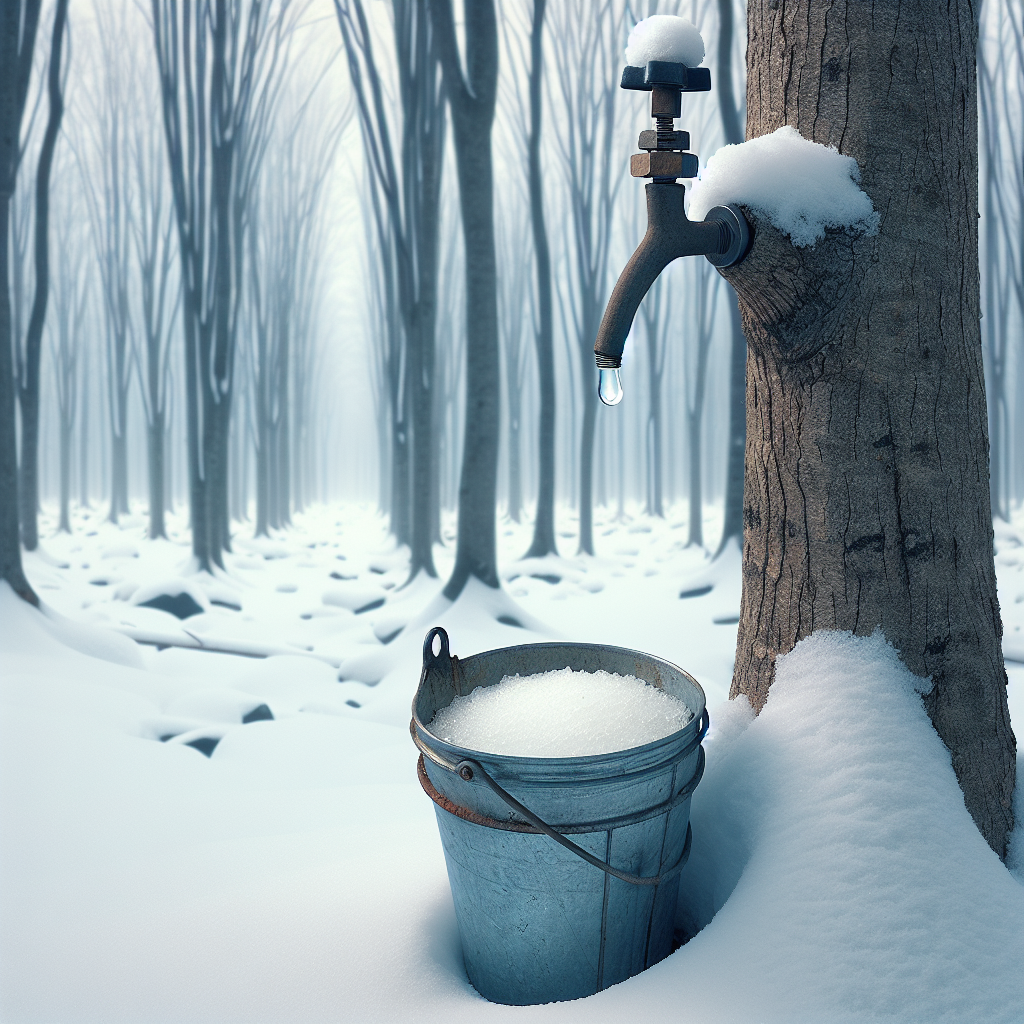Scientists made a new map of England’s hedges and found out they are very long. If you put all the hedges in a line, they would go around the Earth almost ten times. The map was made using special flying cameras that can see the ground. Some places have more hedges than others. People who study nature want to use this map to help protect the hedges because they are good for animals and the air.
Long ago, people in Britain started making hedges to mark where their land ended. But, in the last century, many hedges were destroyed because of farming and building. Now, there are not as many hedges as there used to be. The government wants to fix and make more hedges in the coming years. This is part of a big plan to make the environment better.
This new map is very detailed and shows where we need more hedges. England has more hedges than any other place in the world. The map will help people who care about nature to make sure hedges are safe. Hedges are important because they give animals a place to live and they help clean the air.
Original news source: England’s hedges would go around Earth ten times (BBC)
🎧 Listen:
Slow
Normal
Fast
📖 Vocabulary:
| 1 | scientists | People who study the world and how everything works |
| 2 | hedges | Bushes that are planted in a line, often used to mark the edge of an area |
| 3 | map | A drawing or picture that shows where things are |
| 4 | cameras | Devices used to take pictures or videos |
| 5 | nature | Everything that is not made by people, like plants, animals, and mountains |
| 6 | protect | To keep safe from harm or danger |
| 7 | environment | The air, water, and land where people, animals, and plants live |
| 8 | detailed | Having a lot of small parts or features shown clearly |
| 9 | destroyed | Broken or ruined so it can’t be used anymore |
| 10 | government | The group of people who make and enforce laws in a country |
| 11 | plan | A set of actions designed to achieve a goal |
| 12 | clean | To make something free from dirt or pollution |
Group or Classroom Activities
Warm-up Activities:
– News Summary
Instructions: Divide the class into pairs. Give each pair a copy of the article. One student in each pair will be the “reporter” and the other will be the “listener.” The reporter will have one minute to read the article and then summarize the main points to the listener. After one minute, the roles will switch and the listener will summarize the main points to the reporter. Encourage the use of key vocabulary from the article.
– Vocabulary Pictionary
Instructions: Write a list of vocabulary words from the article on the board. Divide the class into small teams. One student from each team will come to the front of the class and you will give them a word from the list. They must draw a picture on the board to represent the word, and their team must guess what word they are drawing within a certain time limit. The team that guesses the most words correctly wins.
– Pros and Cons
Instructions: Divide the class into small groups. Give each group a few minutes to brainstorm the pros and cons of having hedges. They should consider the benefits for animals and the environment, as well as any potential drawbacks. After the brainstorming session, have each group share their ideas with the rest of the class. Encourage the use of complete sentences and explanation of their reasoning.
– Speed Summarizing
Instructions: Divide the class into pairs. Give each pair a copy of the article. Set a timer for one minute. Students will take turns summarizing as much of the article as they can within the time limit. After one minute, they will switch roles. Encourage students to use their own words and try to include as many details as possible.
– Future Predictions
Instructions: Write the following sentence on the board: “In the future, hedges will be more/less common because _______.” Divide the class into small groups. Each group will discuss and come up with their own reasons to complete the sentence. After a few minutes, have each group share their predictions with the rest of the class. Encourage students to use future tense and provide reasons for their predictions based on the information in the article.
🤔 Comprehension Questions:
1. What did scientists make a map of?
2. How long would all the hedges in England be if you put them in a line?
3. How did scientists make the map?
4. Why do people who study nature want to use the map?
5. Why did people in Britain start making hedges long ago?
6. Why were many hedges destroyed in the last century?
7. What does the government want to do with hedges in the coming years?
Go to answers ⇩
🎧✍️ Listen and Fill in the Gaps:
Scientists made a new map of England’s (1)______ and found out they are very long. If you put all the hedges in a line, they would go around the Earth almost ten times. The map was made using special flying cameras that can see the ground. Some (2)______ have (3)______ hedges than (4)______. (5)______ who study nature want to use this map to help protect the hedges because they are good for animals and the air.
Long ago, people in Britain started (6)______ hedges to mark where their land ended. But, in the last century, many hedges were destroyed because of farming and building. Now, there are not as many hedges as there used to be. The government wants to fix and make more hedges in the coming (7)______. This is (8)______ of a big plan to make the (9)______ better.
This new map is very detailed and shows where we need more hedges. England has more hedges than any (10)______ place in the (11)______. The map will help people who care about nature to make sure hedges are safe. Hedges are important because they give animals a place to live and they help (12)______ the air.
Go to answers ⇩
💬 Discussion Questions:
Students can ask a partner these questions, or discuss them as a group.
1. What is a hedge?
2. How would you feel if you saw a hedge being destroyed?
3. Do you like hedges? Why or why not?
4. Do you think it’s important to protect hedges? Why or why not?
5. What do you think animals use hedges for?
6. Have you ever seen a hedge before? Where?
7. How do you think hedges help clean the air?
8. Do you think it’s a good idea to make more hedges? Why or why not?
9. What are some other ways we can protect the environment?
10. How do you think the government can help make more hedges?
11. Have you ever planted anything before? What did you plant?
12. Why do you think England has more hedges than any other place in the world?
Individual Activities
📖💭 Vocabulary Meanings:
Match each word to its meaning.
Words:
1. scientists
2. hedges
3. map
4. cameras
5. nature
6. protect
7. environment
8. detailed
9. destroyed
10. government
11. plan
12. clean
Meanings:
(A) People who study the world and how everything works
(B) Having a lot of small parts or features shown clearly
(C) Devices used to take pictures or videos
(D) Everything that is not made by people, like plants, animals, and mountains
(E) A set of actions designed to achieve a goal
(F) Broken or ruined so it can’t be used anymore
(G) Bushes that are planted in a line, often used to mark the edge of an area
(H) The group of people who make and enforce laws in a country
(I) To make something free from dirt or pollution
(J) The air, water, and land where people, animals, and plants live
(K) A drawing or picture that shows where things are
(L) To keep safe from harm or danger
Go to answers ⇩
🔡 Multiple Choice Questions:
1. How long would all of England’s hedges be if you put them in a line?
(a) Twice around the Earth
(b) Almost ten times around the Earth
(c) Halfway around the Earth
(d) Just around England
2. How did scientists make the map of England’s hedges?
(a) Using satellite images
(b) Using drones
(c) Using special flying cameras
(d) Using maps from the government
3. Why do people want to protect the hedges?
(a) Because they are good for animals and the air
(b) Because they are fun to look at
(c) Because they are a part of history
(d) Because they are good for farming
4. Why were many hedges destroyed in the last century?
(a) Because of bad weather
(b) Because of animals eating them
(c) Because of farming and building
(d) Because of people not liking them
5. What does the government want to do with hedges in the coming years?
(a) Fix and make more hedges
(b) Remove all the hedges
(c) Leave the hedges as they are
(d) Use the hedges for building houses
6. What does the new map show?
(a) Where to find the best hedges
(b) Where to find the longest hedges
(c) Where to find the oldest hedges
(d) Where more hedges are needed
7. Which country has the most hedges in the world?
(a) France
(b) England
(c) Germany
(d) Australia
8. Why are hedges important?
(a) They make the countryside look pretty
(b) They are a good place for picnics
(c) They are a barrier to keep people out
(d) They give animals a place to live and help clean the air
Go to answers ⇩
🕵️ True or False Questions:
1. Scientists used special flying cameras to make a detailed map of England’s hedges.
2. People who analyze nature want to utilize this map to safeguard the bushes because they are beneficial for animals and the atmosphere.
3. Bushes are crucial because they offer animals with a habitat and assist in purifying the air.
4. Long ago, people in Britain made hedges to mark where their land ended.
5. In the previous century, numerous bushes were eliminated because of agriculture and construction.
6. If you put all the hedges in a line, they would go around the Earth almost ten times.
7. The government wants to fix and make more hedges in the coming years to make the environment better.
8. Certain areas in England have fewer hedges than others.
Go to answers ⇩
📝 Write a Summary:
Write a summary of this news article in two sentences.
Check your writing now with the best free AI for English writing!
Writing Questions:
Answer the following questions. Write as much as you can for each answer.
Check your answers with our free English writing assistant!
1. What did scientists make a map of in England?
2. How long would all the hedges in England be if you put them in a line?
3. Why were many hedges destroyed in the last century?
4. What does the government want to do with hedges in the coming years?
5. Why are hedges important for animals and the air?
✅ Answers
🤔✅ Comprehension Question Answers:
1. What did scientists make a map of?
Scientists made a map of England’s hedges.
2. How long would all the hedges in England be if you put them in a line?
If you put all the hedges in a line, they would go around the Earth almost ten times.
3. How did scientists make the map?
Scientists made the map using special flying cameras that can see the ground.
4. Why do people who study nature want to use the map?
People who study nature want to use the map to help protect the hedges because they are good for animals and the air.
5. Why did people in Britain start making hedges long ago?
People in Britain started making hedges long ago to mark where their land ended.
6. Why were many hedges destroyed in the last century?
Many hedges were destroyed in the last century because of farming and building.
7. What does the government want to do with hedges in the coming years?
The government wants to fix and make more hedges in the coming years as part of a big plan to make the environment better.
Go back to questions ⇧
🎧✍️✅ Listen and Fill in the Gaps Answers:
(1) hedges
(2) places
(3) more
(4) others
(5) People
(6) making
(7) years
(8) part
(9) environment
(10) other
(11) world
(12) clean
Go back to questions ⇧
📖💭✅ Vocabulary Meanings Answers:
1. scientists
Answer: (A) People who study the world and how everything works
2. hedges
Answer: (G) Bushes that are planted in a line, often used to mark the edge of an area
3. map
Answer: (K) A drawing or picture that shows where things are
4. cameras
Answer: (C) Devices used to take pictures or videos
5. nature
Answer: (D) Everything that is not made by people, like plants, animals, and mountains
6. protect
Answer: (L) To keep safe from harm or danger
7. environment
Answer: (J) The air, water, and land where people, animals, and plants live
8. detailed
Answer: (B) Having a lot of small parts or features shown clearly
9. destroyed
Answer: (F) Broken or ruined so it can’t be used anymore
10. government
Answer: (H) The group of people who make and enforce laws in a country
11. plan
Answer: (E) A set of actions designed to achieve a goal
12. clean
Answer: (I) To make something free from dirt or pollution
Go back to questions ⇧
🔡✅ Multiple Choice Answers:
1. How long would all of England’s hedges be if you put them in a line?
Answer: (b) Almost ten times around the Earth
2. How did scientists make the map of England’s hedges?
Answer: (c) Using special flying cameras
3. Why do people want to protect the hedges?
Answer: (a) Because they are good for animals and the air
4. Why were many hedges destroyed in the last century?
Answer: (c) Because of farming and building
5. What does the government want to do with hedges in the coming years?
Answer: (a) Fix and make more hedges
6. What does the new map show?
Answer: (d) Where more hedges are needed
7. Which country has the most hedges in the world?
Answer: (b) England
8. Why are hedges important?
Answer: (d) They give animals a place to live and help clean the air
Go back to questions ⇧
🕵️✅ True or False Answers:
1. Scientists used special flying cameras to make a detailed map of England’s hedges. (Answer: True)
2. People who analyze nature want to utilize this map to safeguard the bushes because they are beneficial for animals and the atmosphere. (Answer: False)
3. Bushes are crucial because they offer animals with a habitat and assist in purifying the air. (Answer: False)
4. Long ago, people in Britain made hedges to mark where their land ended. (Answer: True)
5. In the previous century, numerous bushes were eliminated because of agriculture and construction. (Answer: False)
6. If you put all the hedges in a line, they would go around the Earth almost ten times. (Answer: True)
7. The government wants to fix and make more hedges in the coming years to make the environment better. (Answer: True)
8. Certain areas in England have fewer hedges than others. (Answer: False)
Go back to questions ⇧














